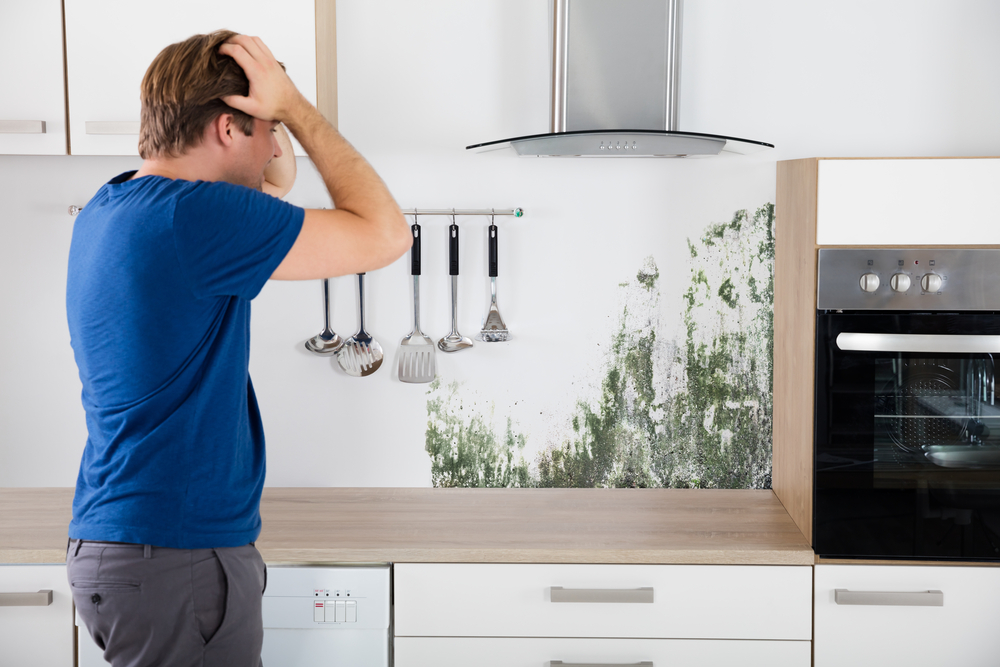Removing mold in the kitchen after it’s established a stronghold is like fighting a war of attrition. Mold can get everywhere and continue to spread. The spores will take root on any surface that’s warm enough and moist enough and then grow out of control. Can you remove mold in the kitchen yourself? It is possible, but you’ll have to take precautions and make sure you wear long gloves and pants to prevent the spores from getting in contact with your skin. When clearing mold in the kitchen, you need to have a plan of attack, which we’ll guide you through here.
1. Shower
Starting from one of the moistest rooms in the house, you’ll have to have the right equipment to clean the shower and bathroom area of mold. The most effective way to start cleaning the bathroom is with grout cleaning. Small areas can be kept clean by applying a liberal amount of grout cleaner to the space between tiles. To do this, you must spray the grout, leave it for fifteen minutes, and then wipe the area clean.
2. Walls and Ceilings
If you have porous ceiling tiles, it’s best you just throw them out and replace them. Otherwise, you can use detergent and a sponge to coat the mold. After application, let the detergent dry completely. Make a solution of 3/4 cup of bleach with warm water and apply it to the area. Let it rest for five minutes, then use a brush to clean the stains of the mold off the surface. After the treatment, the mold should come off quickly.
3. Couches, Curtains, and Fabric
If you’ve got mold on your fabric-covered items, you need to get those items outdoors before you deal with them. Start by brushing the mold spores off the fabric with a hairbrush. If they’re curtains or clothes that can be machine-washed, you should use the hottest water setting and put the clothes through a wash cycle. If the fabric is on a couch or is unwashable, hand-cleaning will help you clear out the mold, but it will be time-consuming.
4. Wooden Surfaces and Furniture
You’ll need a vacuum with a HEPA filter to perform the first pass and scoop up the mold spores. Next, apply a few drops of dishwashing liquid to the surface and rub it in with a rag. Use a little moisture only since you don’t want to saturate the wood. Next, use fresh, clean water to wipe the surface dry. The longer you leave the wood, the more likely you will damage the surface, so this must all be done with relative haste.
5. Preventative Measures for the Future
When you get rid of your mold, you want to ensure it doesn’t come back. Consider adding a dehumidifier to the home to control the moisture content indoors. After showering, leave your shower liner or curtain spread open, to allow moisture to evaporate. Get a few fans to help with air circulation so that spores don’t have time to settle and grow. Don’t store items in damp rooms; ensure that damp clothing is washed and hung to dry immediately.
Conclusion
Should you find that the mold situation in your home is out of control, do not hesitate to contact a professional mold remediation service. They have experience in getting rid of mold and keeping it at bay. A failure to act can cause you health issues, and just isn’t worth it. Contact J&R Restoration for your mold issues in South Florida, as they have state licensed and trained mold assessors, and everything needed to fight the mold battle for you.


